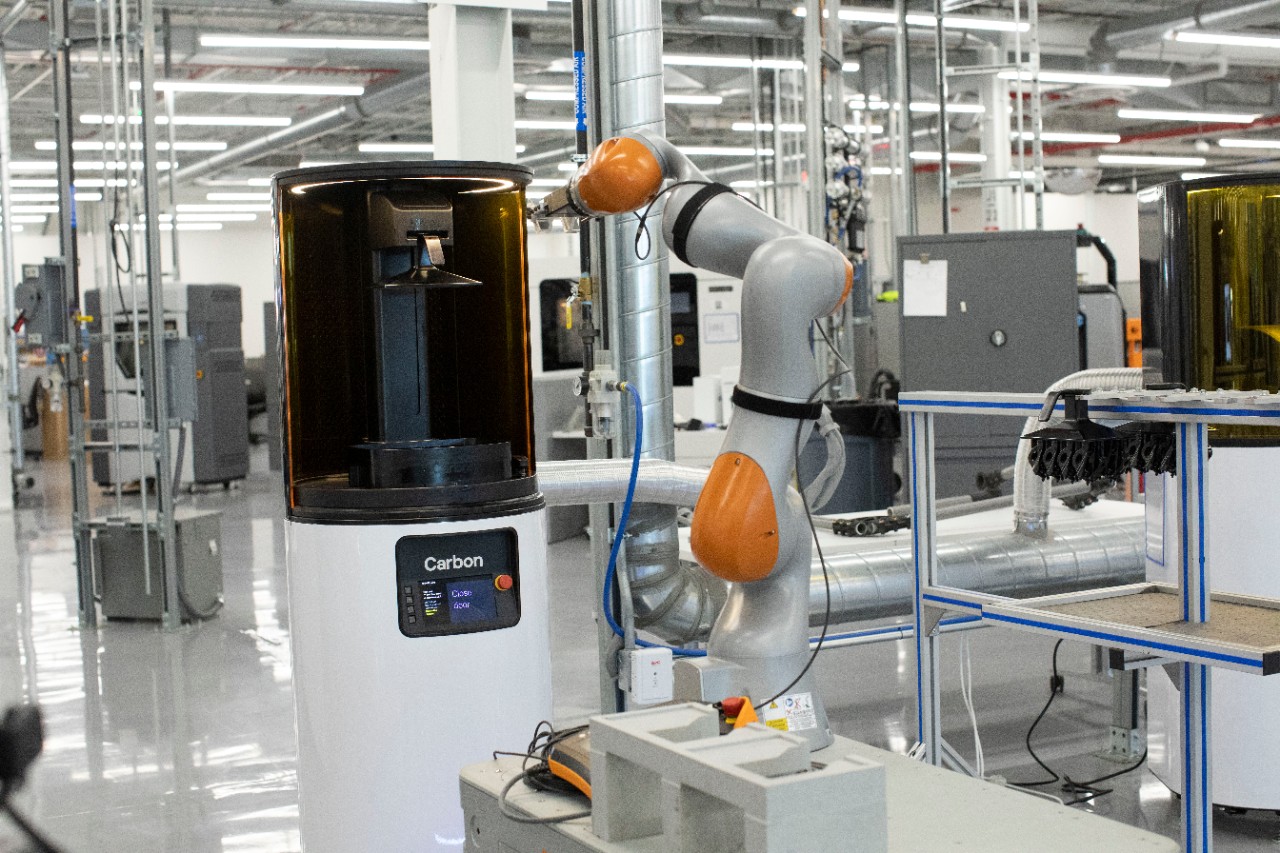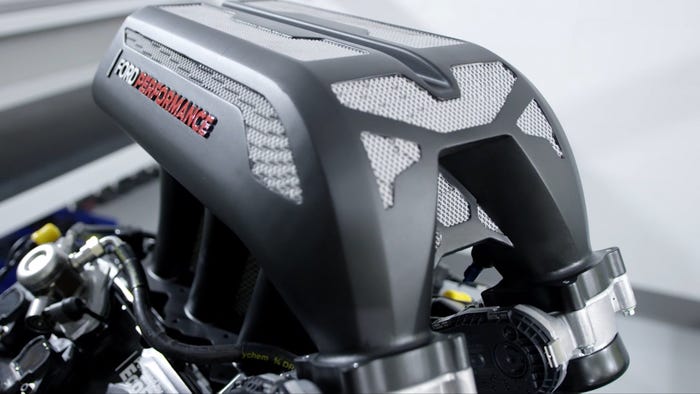Additive Manufacturing Accelerating Change in Auto IndustryAdditive Manufacturing Accelerating Change in Auto Industry
While AM has been widely adopted in the aerospace and medical industries, the automotive industry has lagged due to unique challenges in scaling 3D printing for the serialized production of vehicle components.
May 19, 2022

Since it entered the manufacturing space in the 1980s, additive manufacturing (AM), or 3D printing, has become an essential technology in the automotive industry. Some estimate that by 2029, it will have generated $9 billion in revenue from end-use parts alone.
AM allows for tool-less production with almost endless design flexibility. Since acquiring one of the first 3D printers produced in the late 1980s, Ford has pioneered the use of AM for prototyping, product design and the manufacturing of parts.
Today, in addition to prototyping, 3D printing is used to build manufacturing aids and fixtures for our factories, tooling inserts for injection molding and casting, spare parts and performance parts for racecars. We are also increasingly utilizing AM for production parts. Ford’s Mustang Shelby GT500, for instance, is equipped with 3D-printed brake brackets.
However, while AM has been widely adopted in the aerospace and medical industries, the automotive industry has lagged due to unique challenges in scaling 3D printing for the serialized production of vehicle components.
Along with fellow industry experts, I took part in a panel discussion at SME’s RAPID + TCT, the largest additive manufacturing event in North America, to discuss the next phase of AM for automotive production. The panel, moderated by Bill Bihlman, Ph.D., founder and president of Aerolytics LLC, included colleagues from General Motors and Honda exploring the unique challenges and opportunities our industry faces, compared to the aerospace industry, in adopting AM at an enterprise level.

Ford 3D PRINTED INTAKE
AM is well-suited for producing the high-value, low-volume parts that aerospace requires – as well as the one-of-a-kind prosthetics and implants that transform patient lives in the medical industry. These same advantages of AM open up opportunities for the production of custom parts for high-performance vehicles in motorsports.
For example, in 2019, Ford produced the largest 3D metal-printed part for a working vehicle in automotive history for Gymkhana TEN star Ken Block’s “Hoonitruck.” While AM was able to provide a level of performance not achievable by conventional manufacturing, scaling the technology remains a challenge.
As Technical Leader of AM Research at Ford, I oversee a team of researchers focused on addressing the AM technologies that are required for wider usage of AM throughout the enterprise, with a particular focus on developing new materials and processes capable of being scaled to support serialized production. Today, our team is working to address the challenge of creating cost- and energy-efficient AM processes that can enable value creation so that the production of cars and trucks is accessible and affordable to every person.
Unlike the lower production volumes associated with aerospace manufacturing, or with supercars and luxury vehicles, scaling AM for the auto industry means making millions of parts. And today, the high cost of 3D-printed parts – coupled with the low throughput and speed of printing – presents a barrier that heavily impacts an industry based on high-volume and low-margin production.
While a clear strength of AM is its highly customizable nature, less is currently understood about how to achieve the process capability needed for mass production. Serialized production will require industry-wide standardization. At Ford, we're working with other U.S. automakers to move the work of developing standardized metrics for materials and processes forward in partnership with the United States Council for Automotive Research as well as UL, LLC and ASTM F42.
When it comes to utilizing AM in serialized production, we continue to gain ground. Because of technological advances, we are expanding end-use capabilities every day. Our printed parts demonstrate strong durability and performance. We’ve seen rapid growth in the use of AM for manufacturing aids. And 3D printing has ramped up our capacity to produce low-volume and custom parts.
We are also making great strides to integrate AM into widespread production. This year, Ford introduced “Javier,” an autonomous mobile robot that operates 3D printers to run continuously without human intervention. Steps like this allow us to improve efficiency and reduce costs associated with production.

Ellen Lee - Ford
The next decade will be a game-changer for the automotive industry. The disruption of new trends and technologies including digitalization, electrification, driver assist, sustainability and supply-chain agility can bring new opportunities for AM. And thanks to constant innovation, we’re inching closer to scaling AM every day.Through events such as RAPID + TCT, not only can we share experiences with experts in AM across industry verticals, we also can drive the direction of technology development toward the unique needs of the auto industry. Together we can accelerate the adoption of tools and technologies that once were a distant vision of the future.
Ellen Lee, Ph.D., (pictured, above left) is Technical Leader of AM Research at Ford.
About the Author
You May Also Like